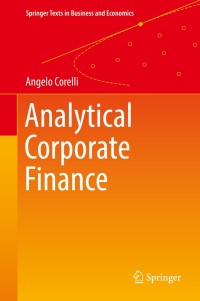

Problem #3 Company S is based in Germany and keeps its books in EUR (). Company S's functional currency is USD ($). Here is the December 31, Year 0 balance sheet for Company S. Company S balance sheet . December 31, Year 0 Cash 409,000 Accounts payable 360,000 Accounts receivable 644,000 Long-term debt 988,000 Inventory 745,000 Total liabilities 1,348,000 Equipment 2,000,000 Common stock + APIC 450,000 Accumulated depreciation (400,000) Retained earnings 1,600,000 Total assets 3,398,000 Total stockholders equity 2,050,000 Total L + SE 3,398,000 . On January 1, Year 1, Company P (which is based in the United States and reports in USD) acquires all of the outstanding shares of Company S for $2,844,000. The valuation consultant on the deal noted the following: The fair value Company S's equipment at the time of acquisition was 1,920,000, and has a remaining useful life of 8 years (straight-line depreciation; no scrap value). All other individual assets and liabilities had fair values which equaled their book values. During Year 1: Company S's Sales and Other Expenses were generated uniformly throughout the year. Company S's inventory purchases were roughly uniform throughout the year. Company S uses the FIFO cost flow assumption. The ending inventory on Company S's balance sheet was acquired when the exchange rate was 1.38 S/. Company S did not purchase any new equipment during Year 1. Company S's dividend was declared (and immediately paid) on July 15. Relevant exchange rates: January 1, Year 1: 1.20 S/ July 15, Year 1: 1.30 $/ December 31, Year 1: 1.40 $/ Year 1 average: 1.32 $/ 13.1] Prepare the consolidation entries that would be needed to prepare a consolidated balance sheet immediately after the acquisition (3.21 Remeasure Company S's December 31, Year 1 pre-closing trial balance (shown on the next page) into USD. (3.3] Prepare Company P's equity method journal entries for Year 1. (3.4) Prepare the consolidation entries necessary for Year 1. . Here is the December 31, Year 1 pre-closing trial balance for Company S. Company S() Remeasured Company S(S) Dr. Cr. S/ Dr. Cr. Cash 480,000 Accounts receivable 720,000 Inventory 800,000 Equipment 2,000,000 Accum. depr. 600,000 Accounts payable 320,000 Long-term debt 926,000 Common stock + APIC 450,000 Retained earnings 1,600,000 Dividends declared 56,000 Sales 1,360,000 Cost of sales 760,000 Depreciation expense 200,000 Other expenses 240,000 5,256,000 5,256,000 Problem #3 Company S is based in Germany and keeps its books in EUR (). Company S's functional currency is USD ($). Here is the December 31, Year 0 balance sheet for Company S. Company S balance sheet . December 31, Year 0 Cash 409,000 Accounts payable 360,000 Accounts receivable 644,000 Long-term debt 988,000 Inventory 745,000 Total liabilities 1,348,000 Equipment 2,000,000 Common stock + APIC 450,000 Accumulated depreciation (400,000) Retained earnings 1,600,000 Total assets 3,398,000 Total stockholders equity 2,050,000 Total L + SE 3,398,000 . On January 1, Year 1, Company P (which is based in the United States and reports in USD) acquires all of the outstanding shares of Company S for $2,844,000. The valuation consultant on the deal noted the following: The fair value Company S's equipment at the time of acquisition was 1,920,000, and has a remaining useful life of 8 years (straight-line depreciation; no scrap value). All other individual assets and liabilities had fair values which equaled their book values. During Year 1: Company S's Sales and Other Expenses were generated uniformly throughout the year. Company S's inventory purchases were roughly uniform throughout the year. Company S uses the FIFO cost flow assumption. The ending inventory on Company S's balance sheet was acquired when the exchange rate was 1.38 S/. Company S did not purchase any new equipment during Year 1. Company S's dividend was declared (and immediately paid) on July 15. Relevant exchange rates: January 1, Year 1: 1.20 S/ July 15, Year 1: 1.30 $/ December 31, Year 1: 1.40 $/ Year 1 average: 1.32 $/ 13.1] Prepare the consolidation entries that would be needed to prepare a consolidated balance sheet immediately after the acquisition (3.21 Remeasure Company S's December 31, Year 1 pre-closing trial balance (shown on the next page) into USD. (3.3] Prepare Company P's equity method journal entries for Year 1. (3.4) Prepare the consolidation entries necessary for Year 1. . Here is the December 31, Year 1 pre-closing trial balance for Company S. Company S() Remeasured Company S(S) Dr. Cr. S/ Dr. Cr. Cash 480,000 Accounts receivable 720,000 Inventory 800,000 Equipment 2,000,000 Accum. depr. 600,000 Accounts payable 320,000 Long-term debt 926,000 Common stock + APIC 450,000 Retained earnings 1,600,000 Dividends declared 56,000 Sales 1,360,000 Cost of sales 760,000 Depreciation expense 200,000 Other expenses 240,000 5,256,000 5,256,000








